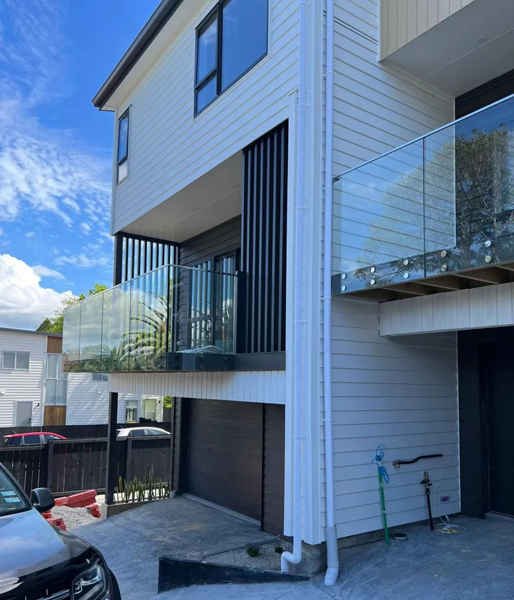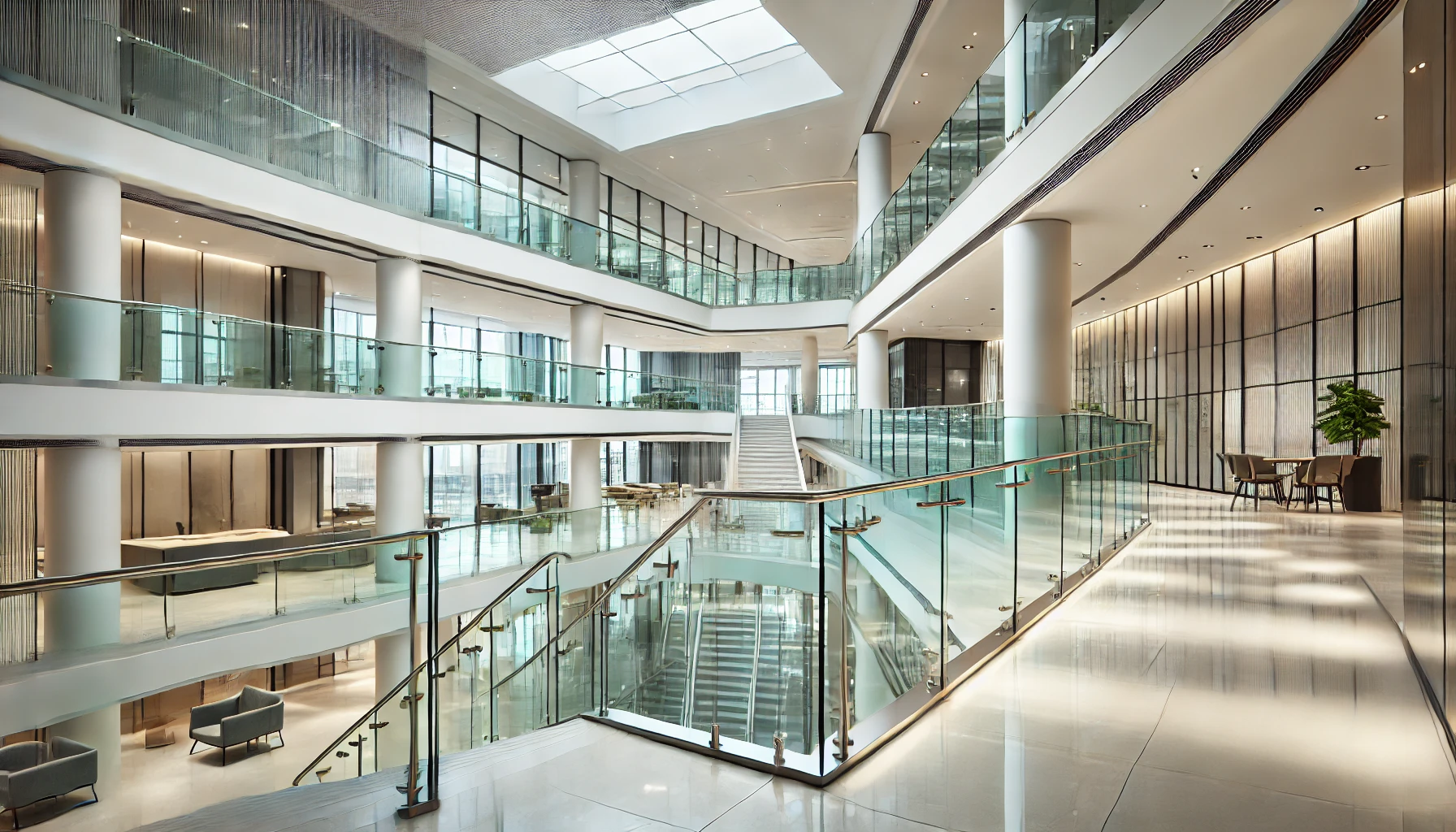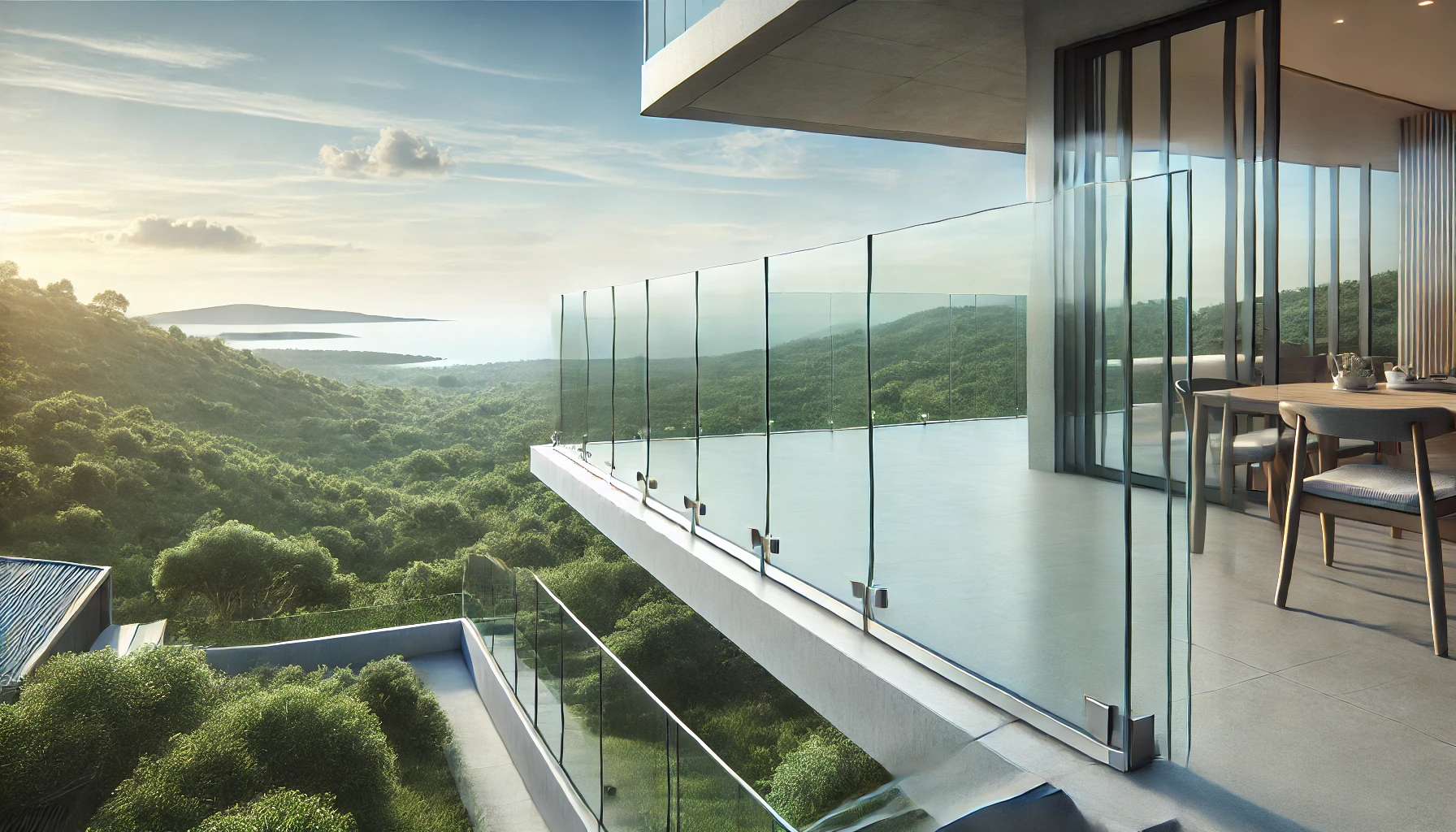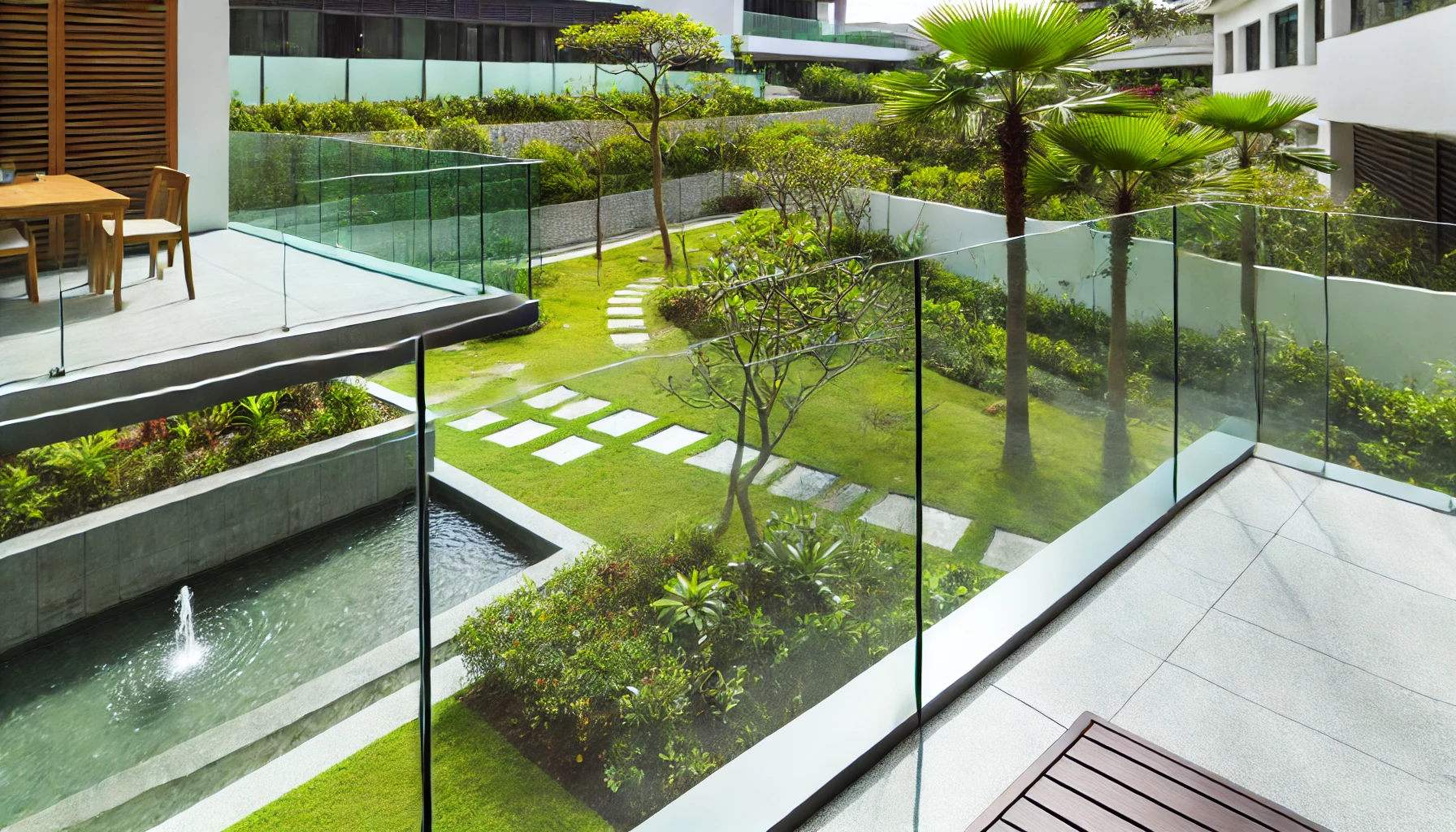Introduction
Glass railings have become a popular choice in both residential and commercial architecture, offering a blend of aesthetic appeal and functionality. The sleek and modern look of glass railings makes them a desirable option for balconies, staircases, terraces, and pool enclosures. However, the selection of the appropriate glass material is crucial for ensuring safety and durability. This comprehensive guide will delve into the different types of glass used in railings, including tempered glass and laminated glass, and explore their safety features, suitability for various environments, and key considerations for design and installation.
1. Types of Glass Used in Railings
a) Tempered Glass
Tempered glass, also known as toughened glass, is one of the most commonly used materials for glass railings. It is produced by heating the glass to a high temperature and then rapidly cooling it, a process that increases its strength compared to regular glass.
- Strength: Tempered glass is up to four times stronger than standard glass. It is designed to withstand impact and resist breakage, making it an ideal material for railings, especially in areas with high traffic or where safety is a concern.
- Safety: In the event of breakage, tempered glass shatters into small, blunt pieces that are less likely to cause injury. This characteristic is crucial for applications such as staircases and balconies where the risk of falls exists.
- Applications: Tempered glass is suitable for both indoor and outdoor use. It is commonly used in balcony railings, staircase enclosures, pool fences, and terrace barriers due to its durability and safety features.
b) Laminated Glass
Laminated glass is another popular option for glass railings. It consists of two or more layers of glass bonded together with an interlayer, usually made of polyvinyl butyral (PVB) or ethylene-vinyl acetate (EVA).
- Strength and Safety: Laminated glass is exceptionally strong and provides enhanced safety features. Even if the glass breaks, the interlayer holds the shards together, preventing them from falling apart. This makes laminated glass a preferred choice for environments where additional safety is required, such as in high-rise buildings or around swimming pools.
- Sound Insulation: Laminated glass also offers excellent sound insulation properties, making it suitable for use in urban areas or near busy roads where noise reduction is desired.
- UV Protection: The interlayer in laminated glass can block up to 99% of harmful UV rays, protecting the interior spaces from fading and reducing the risk of skin damage.
- Applications: Laminated glass is often used in areas requiring enhanced safety, such as balconies, staircases, and pool enclosures. It is also favored for its acoustic properties in office buildings, hotels, and residential projects.
c) Other Glass Types
In addition to tempered and laminated glass, other types of glass may be used in specialized applications.
- Heat-Soaked Glass: Heat-soaked glass is tempered glass that has undergone an additional heat-soaking process to reduce the risk of spontaneous breakage due to nickel sulfide inclusions. It is often used in high-risk areas or where additional safety measures are required.
- Tinted Glass: Tinted glass can be used to reduce glare and improve privacy while maintaining the sleek appearance of glass railings. It is available in various shades and can be used in combination with tempered or laminated glass.
- Frosted Glass: Frosted glass is used for privacy and aesthetic purposes, providing a translucent appearance. It can be used in railings where privacy is desired, such as around swimming pools or balconies.
2. Safety Features and Considerations
a) Impact Resistance
The primary safety feature of glass railings is their impact resistance. Both tempered and laminated glass are designed to withstand significant impacts, reducing the likelihood of breakage. When choosing the type of glass for a railing, it is essential to consider the expected load and impact forces, especially in high-traffic areas or where the railing might be exposed to heavy objects.
- Load Requirements: Glass railings must meet specific load-bearing requirements as dictated by local building codes. This includes considerations for wind load, especially in high-rise buildings, and the weight of individuals leaning against the railing.
b) Breakage Pattern
In the rare event that the glass does break, the breakage pattern is a critical safety feature.
- Tempered Glass: As mentioned, tempered glass breaks into small, blunt pieces that minimize the risk of injury.
- Laminated Glass: Laminated glass remains intact even after breaking, as the interlayer holds the shards together. This feature is particularly important in areas where falling glass could pose a hazard, such as in overhead applications or near pedestrian walkways.
c) Balustrade Systems and Frame Design
The safety of a glass railing also depends on the design of the balustrade system and the framing.
- Frameless Systems: Frameless glass railing systems are popular for their minimalist look. However, they require careful consideration of the thickness of the glass and the strength of the mounting hardware to ensure safety.
- Framed Systems: Framed systems, where the glass panels are supported by metal frames, offer additional support and are generally more robust. These are ideal for areas where higher impact resistance is needed.
d) Height and Spacing Regulations
Height and spacing regulations are crucial for the safety of glass railings. Local building codes typically dictate the minimum height of railings and the maximum allowable spacing between panels or balusters.
- Height Requirements: The minimum height for residential railings is usually around 36 inches (91 cm), while commercial railings may require a height of up to 42 inches (107 cm).
- Spacing: For safety reasons, the gaps between glass panels or between the railing and the floor should be minimal to prevent small children or pets from slipping through.
3. Design Considerations
a) Aesthetic Appeal
The design of glass railings plays a significant role in the overall aesthetic of the space.
- Transparency: One of the key advantages of glass railings is their transparency, which allows for unobstructed views. This is particularly desirable in locations with scenic views, such as seaside balconies or rooftop terraces.
- Customization: Glass railings can be customized in terms of thickness, color, and finish. Whether you prefer clear glass for a modern look or frosted glass for added privacy, the options are virtually limitless.
b) Environmental Considerations
The environment in which the glass railing will be installed should also influence material selection and design.
- Outdoor vs. Indoor: While tempered glass is suitable for both indoor and outdoor use, laminated glass might be preferred in areas exposed to extreme weather conditions due to its additional safety features.
- Corrosion Resistance: The metal components of the railing system, such as posts and brackets, should be made from materials resistant to corrosion, such as stainless steel or aluminum, especially in coastal areas.
c) Maintenance Requirements
Glass railings require regular maintenance to retain their aesthetic appeal and ensure safety.
- Cleaning: Glass panels should be cleaned regularly with appropriate cleaning agents to prevent the buildup of dirt and grime. Special coatings, such as hydrophobic or anti-fingerprint coatings, can be applied to reduce maintenance efforts.
- Inspection: Periodic inspections are necessary to check for any signs of wear, damage, or loosening of the mounting hardware. This is especially important in high-traffic areas or after extreme weather events.
4. Installation Best Practices
a) Professional Installation
Proper installation is critical to the safety and longevity of glass railings. It is highly recommended to hire professionals with experience in glass railing installation.
- Alignment and Leveling: Ensuring that the glass panels are correctly aligned and leveled is crucial for both safety and aesthetics.
- Secure Mounting: The mounting hardware must be securely fastened to the underlying structure. This includes checking that the anchors are properly embedded and that the posts are sturdy.
b) Compliance with Building Codes
Installation must comply with local building codes, which specify requirements for height, load-bearing capacity, and spacing.
- Permits and Inspections: Obtain the necessary permits before installation and ensure that the installation is inspected by local authorities to confirm compliance with safety standards.
c) Post-Installation Testing
After installation, it is advisable to conduct a series of tests to verify the stability and safety of the railing system.
- Load Testing: This involves applying force to the railing to ensure it can withstand the required load without deflection or failure.
- Safety Checks: Regular safety checks should be part of ongoing maintenance, particularly in commercial settings where the railings are subjected to constant use.
Conclusion
Selecting the right glass material and ensuring proper design, installation, and maintenance are essential for the safety and durability of glass railings. Whether you opt for tempered or laminated glass, understanding the properties and safety features of each material will help you make an informed decision. By following best practices and adhering to local building codes, you can create a secure and visually appealing environment that enhances the value of any property.







